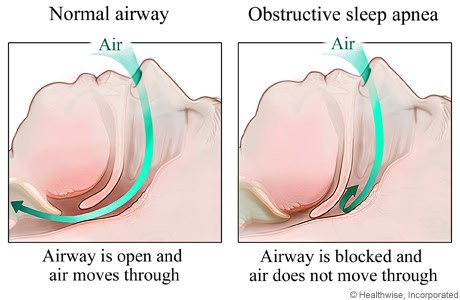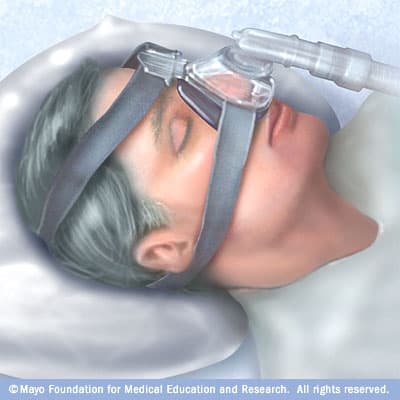03 April 2011
•3 minute read
Snoring - is it a cause for concern?
Why does snoring occur?
Snoring occurs due to narrowing of the airway causing vibration of the soft tissues of the throat during sleep. It is a phenomenon that is observed during sleep especially by the bed partner.
How common is snoring?
- It is more common in men generally whereby 45% of men and 30% of women snore on a regular basis
- Risk factors for snoring include overweight, increasing age, nasal blockage, sedating medications, alcohol, sleeping position and thick neck
- It is important to recognize if snoring is related to an underlying medical problem such as obstructive sleep apnea (OSA) or is an isolated problem
- Snoring can also lead to bedroom disharmony. It can affect the quality of life of not just the snorer but also the bed partner
What is obstructive sleep apnea (OSA)?
It is a severe form of snoring which has serious health consequences. OSA occurs due to complete collapse or obstruction of the upper airway, at one or a combination of these levels:
- Nasal Airway
- Soft Palate/Tonsils
- Tongue Base
- Pharyngeal Walls

The collapse of the airway at these possible sites can lead to apnea, which is total cessation of airflow during breathing for more than 10 seconds. Therefore this will lead to a drop in the blood oxygen saturation level.
Consequently OSA is related to serious health problems such as increased risk of heart attacks, heart disease, hypertension and stroke when left untreated.
What are the complaints related to OSA?
- Loud, irregular snoring
- Daytime tiredness with increased tendency to fall asleep during the day
- Headaches in the morning
- Lack of concentration
- Deterioration of intellectual capabilities
- Personality changes
- Potency problems
- Night sweats
- Tendency to depression
How does the doctor diagnose OSA?
- A thorough history and clinical examination is performed. The weight and height are measured to determine the body mass index (BMI)
- A complete ear, nose and throat examination by endoscopy is performed in the clinic to assess the possible sites of airway obstruction during sleep
- Sleep study is often recommended to confirm the diagnosis and to assess the severity of OSA:
- OSA severity is indicated by the Apnea / Hypopnea Index (AHI) as determined by a Sleep Study
- Mild: 5 – 15 events / hour
- Moderate: 16 – 30 events / hour
- Severe: > 30 events / hour
Is it important to recognize and treat OSA?
It is very important to recognize and treat OSA because if left untreated it can lead to serious health consequences. It is also important to inform your attending doctor if you are diagnosed with OSA especially before undergoing surgery.
Health consequences related to OSA include:
- Hypertension
- Myocardial infarction
- Stroke
- Type II diabetes
- Depression
- Cognitive dysfunction
- Impotence, sexual dysfunction, or reduced libido
- Morning headaches
General preventive measures for snoring
- Sleep habits modification
- Regular sleep-wake timesPeaceful surroundings at night
- Moderate room temperature
- Avoidance of night shift and changing work shifts
- Reduction of weight
- Exercise
- Avoidance of alcohol and sedatives
Treatment options for OSA
APAP (Automated Positive Airway Pressure) with Mask
It is the Gold Standard treatment for Sleep Apnea. Patients are required to wear a face or nasal mask which blows in humidified air. This will help to ‘splint’ the airway open during sleep.

- Oral appliance
Oral Appliance Therapy is a suitable front-line treatment option for mild to moderate OSA sufferers and simple snorers. The Oral Appliance is worn during sleep to maintain the patency of the upper airway by increasing its dimensions and reducing collapsibility. Best are those which are custom made for the patient as it will fit more snugly according to the dimensions of the oral cavity
Surgical treatment options for OSA
The aim of the surgery is to overcome the sites of obstruction. Therefore the type(s) of surgery recommended varies between patients.
The surgeries that can be performed include:
- Tonsillectomy and adenoidectomy for enlarged tonsils and adenoids
- Septoplasty when there is significant nasal septum deviation causing nose block
- Turbinate surgery when there is enlarged turbinates which contribute to nose block
- Soft palate surgery to improve the airway diameter of the throat which includes pillar implant procedure, radiofrequency tissue volume reduction procedure or cautery assisted palatal stiffening operations.
- Base of tongue surgery if there is a bulky tongue which flops backwards and obstructs the airway
- Surgery to facial bones such as the mandibular advancement surgery when there is a small jaw or receding chin
Can OSA occur in children?
Yes, it can occur in children who have snoring. The symptoms may differ from adults as they can present with mouth breathing, behavioural problems/ irritability, learning difficulties, hyperactivity and bedwetting. Often these children have large tonsils and adenoids which cause the airway obstruction. Obesity is a less common reason for OSA in children.
Share:
Was this article helpful?
03 April 2011
•3 minute read
Snoring - is it a cause for concern?
Articles and Video
Learn more about in Columbia Asia
Learn MoreShare:
Was this article helpful?
Health Packages
Elevate your health with tailored health packages at Columbia Asia Hospital. Take charge of your health journey today.

